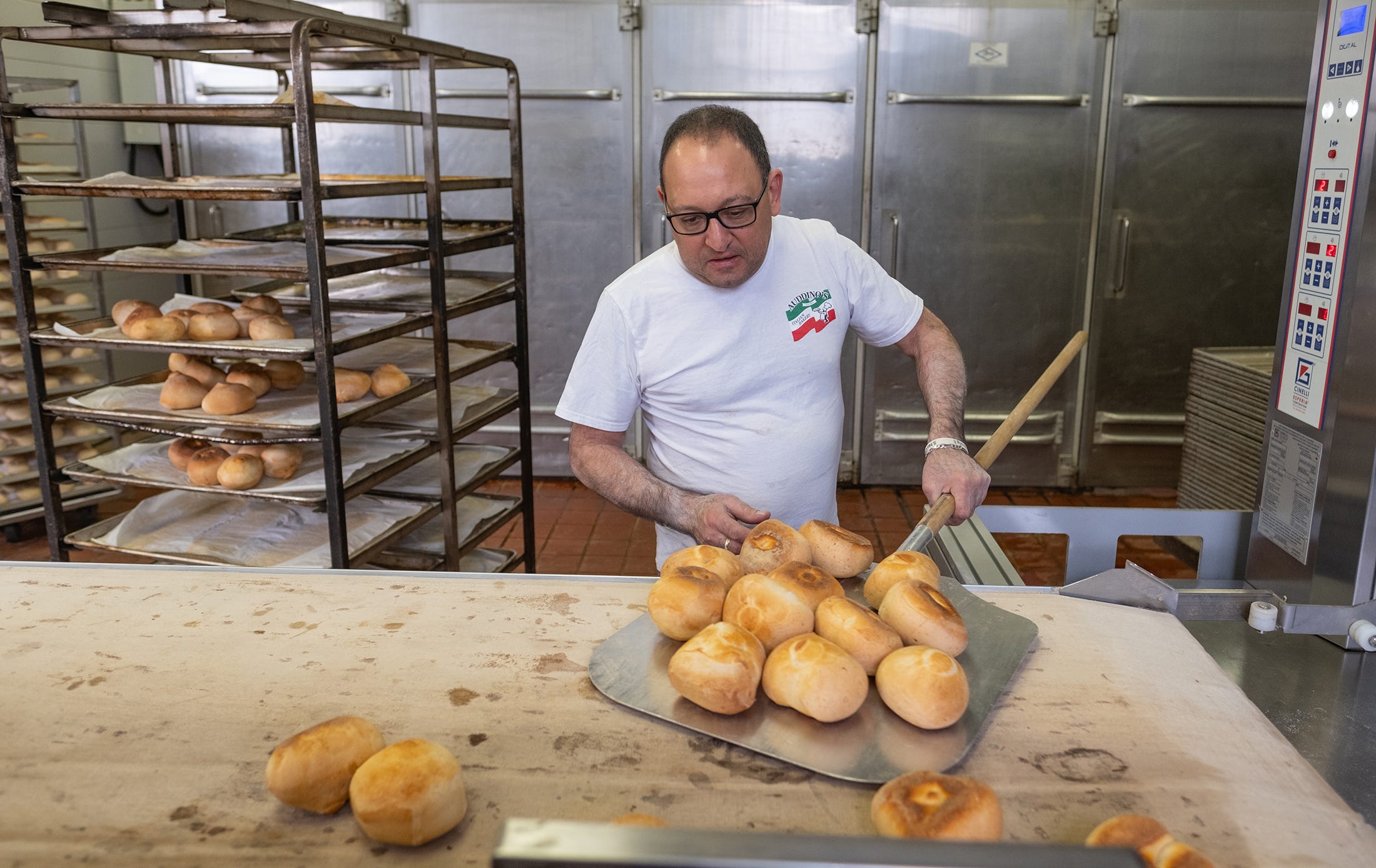Rising Challenges: Columbus-Area Bakers Struggle to Meet Demand for Artisanal Bread
Central Ohio food lovers adore handmade bread, whether it’s sourdough, focaccia or more obscure loaves. So why do we have so few bakeries?

On Friday mornings, Marco Auddino takes the ciabatta and focaccia dough started the previous day and turns it into loaves of artisanal bread. The process is a relay race, and it’s difficult to keep up with him as he power walks from room to room in the 10,000-square-foot facility owned by his family’s 57-year-old bakery. “You have to be in two places at once,” he says as an oven timer goes off and he disappears around a corner.
One of Columbus’ best bread bakeries, Omega, closed just before Thanksgiving after 20 years in the North Market Downtown. The North Market Bridge Park bakery, BREaD, didn't last. Buckeye Bread Co., which supplied loaves to some groceries, closed last year after a short run. Laughlin’s and Lucky Cat are still greatly missed.
But the closures aren’t due to lack of business or talent. Auddino’s Italian Bakery is expanding its artisanal bread program, adding sourdough, German rye and pumpernickel in the coming months. Matija Breads—a decade-old bakery providing wholesale products for Wario’s, Ray Ray’s, Alchemy Cafe and Kitchen and a few small retailers—is at capacity with both space and staffing. “All of the bakers I know are saying ‘no’ [to potential clients] because there’s so much demand for it,” says Kate Djupe, head baker of Granville Bread Co., which brings in more than $1 million in revenue a year, primarily through sales to restaurants.

Cleveland has at least nine bakeries in a metro area of 2.18 million. Central Ohio has the demand for artisanal bread, but why doesn’t Columbus—with a metro population of 2.14 million—have the supply?
Perhaps it helps to define bread. There’s a gap between the Food and Drug Administration’s definition—a bakery product containing yeast-leavened dough, wheat flour, yeast and hydrating ingredients—and the not-so-shelf-stable loaves handmade by the aforementioned bakeries, suggests Matt Swint, owner of Matija Breads. “If you look at the ingredients of any of our products, you’ll see three to four, or maybe 10 ingredients. You’re not seeing dough conditioners, preservatives or fillers. There should be a difference between what is considered a bread and what is considered a bread product.”

Inexpensive bread options from big box retailers create a disconnect in what people see as value, says Dan Riesenberger, whose bespoke, handmade breads are sold under the Dan the Baker brand. “People don’t bat an eye about spending $15 on a cocktail,” he says. “But $14 for a loaf of bread, they say that it’s insane.”
Good bread comes at a cost, and that cost is rising with inflation. Auddino’s goes through 50,000 pounds of flour once or twice a week, and when prices of commodity goods increase, customers expect pricing to stay the same, Auddino says.

Equipment prices play a role, too. Although high-tech ovens can double hourly capacity, these investments are often prohibitive. “You don’t need a lot of equipment, but you need a bread oven, which can cost $40,000 to $120,000,” says Swint.
On a monthly basis, the bulk of expenses are labor and rent, says Auddino’s founder Michele Auddino. Auddino’s purchased its space near the Ohio Expo Center in 1998, which keeps it financially viable. “Today it would be $20,000 in rent,” Michele says. “I wouldn’t survive.” With coolers, product storage, industrial dishwashers and ovens, a bakery requires a large footprint.
Machines can help only so much, which is where labor comes in. Since the onset of the COVID-19 pandemic, the cost of labor has increased dramatically. Auddino’s pays its employees 20 to 25 percent more than it did pre-pandemic, and one of the ways it can keep costs low is that Michele, who retired, doesn’t pay himself, but continues to work 60 hours a week.
Finding funding for a new baking operation is also a challenge. “Central Ohio doesn’t have any investment groups that focus on food,” Djupe says. Traditional banks find the food industry a risky investment, says Ana Assis, director of lending and sales for the Economic and Community Development Institute. Assis spent 26 years at the five biggest banks in Columbus before moving to ECDI, which does nontraditional lending for small food businesses. “To banks, the food industry is risky unless it’s a franchise. There’s high overhead and turnover. And it’s hard to survive through different economic crises,” she says.

Bread Making is a Labor of Love for Local Bakeries
Low margins. Hard physical labor. Prohibitive expenses. Yet still, Central Ohio’s few and mighty bakeries slog through. For the Auddino family, it’s about tradition. Michele goes to sleep at night thinking about making the next day’s bread, and Marco is following in his footsteps. “My dad started this way, and I’ll finish this way,” he says.
For Riesenberger, it’s community. “It’s a funny product to sell in this world and economy,” he says. “Bread is the black sheep of the world and doesn’t get the respect that it deserves. But I’m so thankful for our customers and the support we get through them. The human interactions make it worthwhile.”
And for Djupe, it’s therapy. “There’s something meaningful, soothing, calming, even on hard days. I’ve done harder jobs mentally and physically, and this is the one I don’t seem to get tired of; I just get tired,” she says. “At the end of it, I have something I can share. Giving people bread and sharing it—it’s a deeper connection.”
This story is from the April 2024 issue of Columbus Monthly.
Correction: An earlier version of this story included an inaccurate description of interest rates offered by the Economic and Community Development Institute.